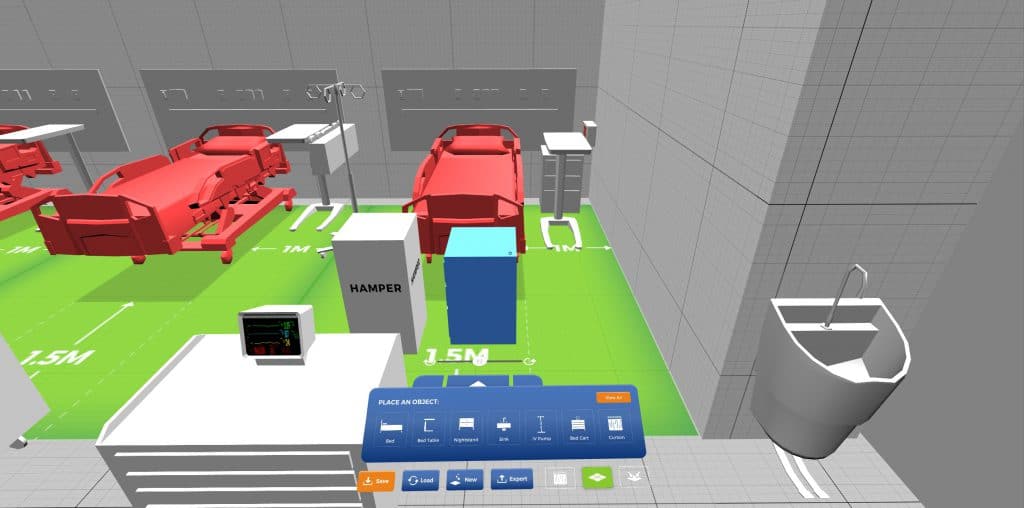It looks like any other treatment room. The doctor is getting ready to wash her hands. The nurse is trying to position the procedure cart. The patient is looking for a place to charge his phone.
Here’s the thing: it’s not real. It’s a holographic simulation. The participants are nowhere near the hospital. They’re wearing space-age goggles and they’re interacting with objects that don’t exist. It’s not some new video game. It’s part of an extraordinary collaboration between St. Paul’s Foundation, Providence Health Care, and the visionaries at Finger Food Studios.
Welcome to the Holodeck and a radical new approach to the design of health care spaces.
Beam me up
The Holodeck at Finger Food Studios, in Coquitlam, is cleverly disguised as a non-descript warehouse. And, in fact, the Holodeck itself is just a huge, empty room until you put on the HoloLens. More than just a VR headset, HoloLens is a self-contained, holographic computer programmed with full-scale, mixed-reality models that you can interact with – in real life and in real time.
Finger Food used HoloLens to give Cirque de Soleil a design tool that can render an entire stage, including holographic performers, so its creative teams (often in different locations) can explore their ideas before construction or casting decisions are made.
It enabled a truck manufacturer to move beyond slow, old-school clay modelling into rapid 3D prototyping.
And, in the words of Amanda Harvey, Program Director Acute & Access Services at Providence Health Care, it’s “an absolute game changer for clinical space design.”
I’m a doctor, not a clinical space designer
In the old days, clinical design meant putting masking tape on the floor and using cardboard to replicate walls, furniture, and equipment. Looking at blueprints wasn’t much better, because 2D drawings can’t simulate how people and equipment will mesh in real life.
“Finger Food is using HoloLens to map out our space and our equipment,” Amanda explains. “It’s allowing us to see first-hand where things work, and as importantly, where they don’t work. And it’s instrumental in answering critical questions while still in the design stage.” Will we have enough space to get the patient out of bed and into a chair? Is there a spot for the equipment when it’s not in use? What if the patient goes into a full code and we have to bring in the whole team?
Says Finger Food COO Hunter Smith, “From day one, the collaboration with PHC was invigorating. As developers and designers there’s nothing more satisfying than seeing passionate teams embrace the tools we create to get valuable outcomes. It was exciting to see how the technology disappeared and everyone seamlessly engaged in their new space with critical, multidisciplinary discussions to ensure they can deliver the best care possible to their patients.”
Make it so
The benefits of this partnership go well beyond our achievements in clinical design. Amanda points out, “Finger Food is actively contributing to our culture of innovation. It’s bringing us to a place where people see the value in doing things differently and in engaging with emerging technology. With the trend toward interdisciplinary medical teams – who have differing approaches and equipment needs – this experience is invaluable.”
For Fiona Dalton, President and CEO of Providence Health Care, it’s especially exciting because of PHC’s leadership role in Canada’s Digital Technology Supercluster, made possible by St. Paul’s Foundation. “This collaboration with Finger Food is just one example of how we can partner with industry to change and improve the way we do things.” Imagine where we might boldly go next!
